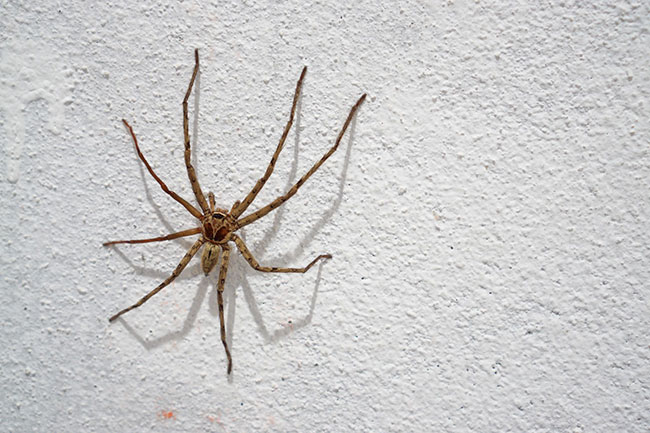While we think of spiders weaving scary webs during Halloween, we also have to be on the lookout for spiders during the rest of the year.
By using eco-friendly pest control measures, you can avoid coming into contact with a dangerous spider inside or outside your home. Therefore, you need to call a Power Pest Control professional if spiders are a problem where you live.
The following information will help you prevent the wrong types of spiders from entering or settling near your home. By using best practices for sustainable spider control, you can keep the spiders at bay.
Dangerous Types of Spiders
So what spiders do you have to watch? Which of these anachrids are dangerous?
1. The Black Widow
The black widow spans a territory that covers most of the U.S. The female ebony spider distinguishes itself with a red hourglass mark on its belly. Males don’t have this marking.
Black widows, which often live among woodpiles or in crevices of buildings, can bite you and make you quite sick.
If you have a bad response, you will experience redness at the bite site along with extreme swelling, burning, and pain. The spider may leave two fang marks behind as well.
The victim’s blood pressure may also spike or he or she will experience cramping or digestive disturbances.
2. The Brown Recluse Spider
Brown recluse spiders are very small spiders, under an inch in length. Usually the spiders are light to medium brown although some of the spiders display colors of white to dark gray. The spider has a mark on its back and neck which resembles a violin.
If you’re bit by the spider, you should seek medical attention right away. A bite can develop into an ulcer or boil, or you may develop an infection.
3. The Hobo Spider
Common in the U.S. Pacific Northwest and Utah, the hobo spider’s belly reveals V-shaped patterns that point toward the spider’s head.
It also exhibits a light stripe that spans the middle of the chest. Hobo spiders are usually colored a light tan to light or darker brown.
The spiders tend to scurry away fast and therefore can dodge a variety of predators. However, they are not good at climbing so they build their nests near the ground. They normally settle in crevices or holes where they weave a funnel-shaped web.
The spider’s bite, which can take 6 months to heal, can cause dizziness, blistering, and swelling
4. The Wolf Spider
The wolf spider is a common U.S. spider that measures about 2 inches long.
These spiders are often seen on the ground in grassy areas. They are orangish-brown to gray or blackish and hairy. Camouflaged with splotched striping, the wolf spider evades attack. While the spider’s bite is not lethal, it certainly is painful and uncomfortable.
5. The Yellow Sac Spider
This spider, which is about the size of a nickel, is colored a bright yellow. Its mouth and eyes are tinted brown. The spider’s first two legs are noticeably longer than its other legs, and males are smaller than females.
The spider is a nocturnal creature and therefore emerges at night. Its bites are painful and very poisonous. Victims can experience pain from the bite or almost two hours after the attack. They may also feel nauseous and vomit.
Learn More about Environmentally Friendly Spider Control
It’s important to take measures to control spiders in and around your home. Just make sure you use a pest control service that supports environmentally friendly services.











